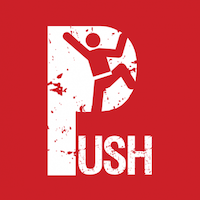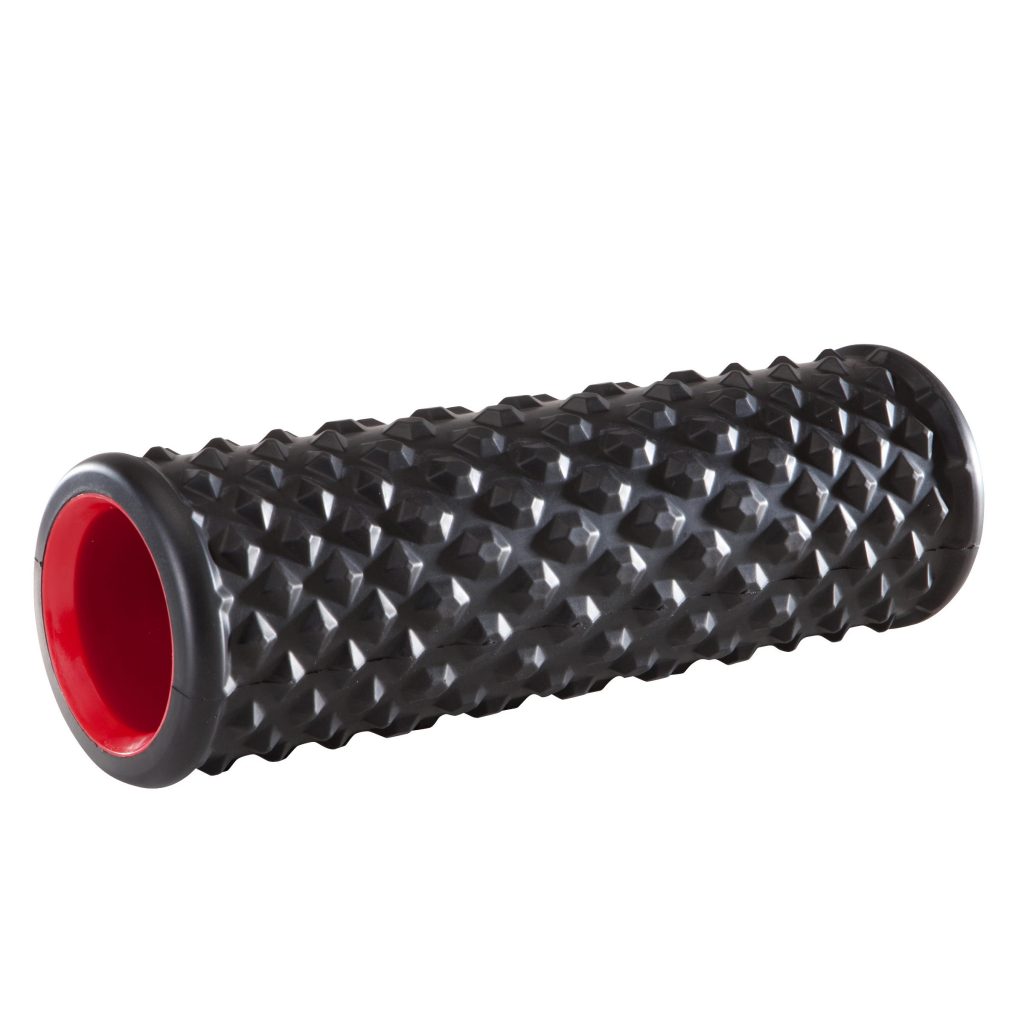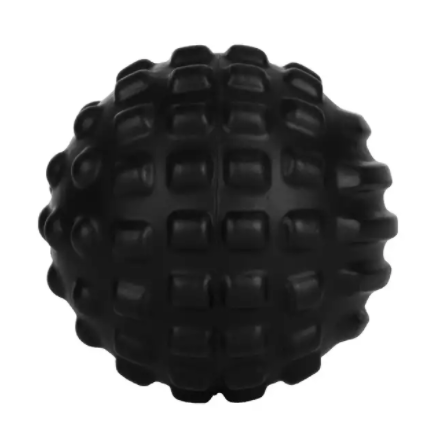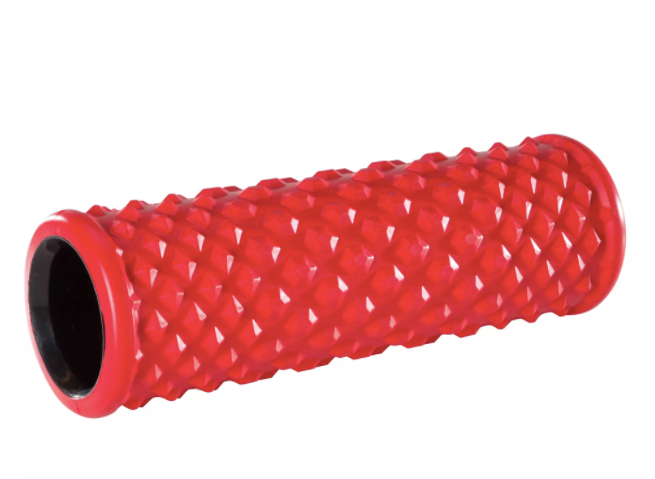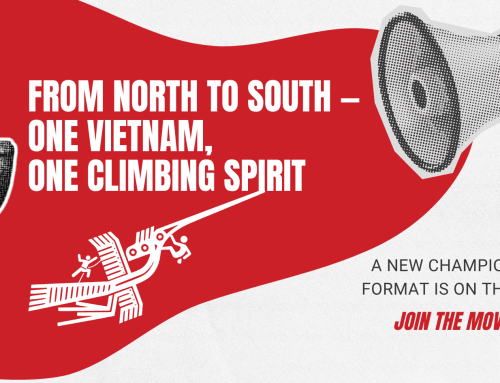We talked with a Fascia Tissue Technique expert, Julia Blackwell who happens to also be a rock climber to learn more about how fascia release technique can improve your climbing skills. You will find some training tips & steps to get started with fascia tissue work to help achieve your fullest climbing potential.
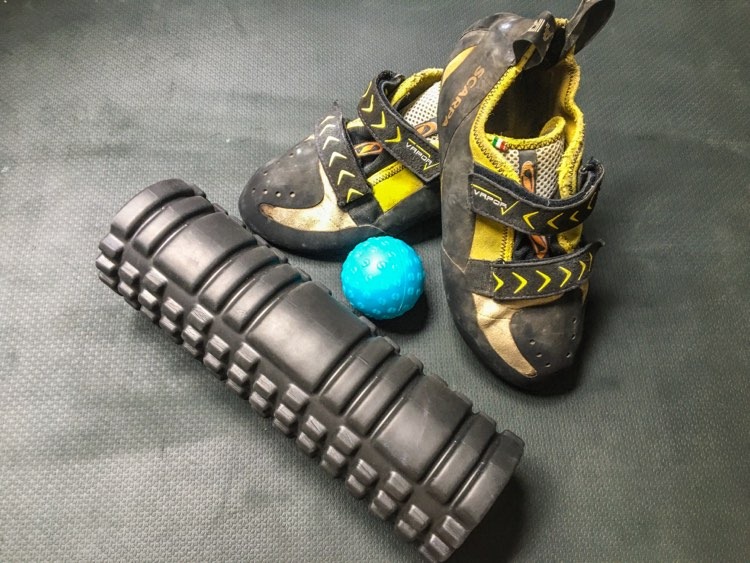
Have you ever heard of fascia tissue? Most likely not. No need to worry, you are not alone.
In primary school we learn how to exercise and move our body and in science class we learn about the systems that control our body. But understanding this magical fascia system is probably off the radar in your knowledge. Perhaps you have tried to use a foam roller but did not exactly understand the depths of the techniques. Follow along to learn more and how to improve your mobility and overall performance as a rock climber.
So, What exactly is Fascia Tissue?
Fascia, or connective tissue, is the most abundant tissue we have in our body. Julia loves to break down fascia like this:
“Fascia tissue is like a 3-dimensional plastic wrap suit that holds everything in your body together. It wraps around your muscles, bones, blood vessels, organs, and even nerves.
One of my favorite analogies is if everything were to magically disappear out of your body except for fascia (so your muscles, your bones, your organs), you would still largely look like you. That is how critical your fascia is for holding your structure and creating your shape. On the flip side, if everything stayed in your body except for the fascia, you would tumble to the ground in a pile of bones and goo.”
COOL RIGHT?! Let’s now explain how and why every rock climber should explore fascia tissue work into their routine and training.
5 REASONS WHY YOU SHOULD ADD FASCIA TISSUE WORK INTO YOUR ROUTINE AS A ROCK CLIMBER:
1.) Repetitive use injuries can be solved through fascia release.
In rock climbing, it is important to take notice that you can have repetitive injuries. What does this mean?
If the body is wrapped in layers of “plastic wrap” like tissue, when you do repetitive motions, like gripping rock after rock or hold after hold, fascia can become a crinkled up ball of plastic wrap. Over time, it can get stuck in that state! Have you tried to pull a crumbled plastic wrap?
IT IS INFURIATING!
Julia Blackwell.
There is nothing wrong with the muscle or the joint, it is more often than not the crumble of plastic wrap. As you continue to push passed the range of motion that is available to you currently, it is going to cause inflammation. This is going to cause pain and tendonitis.
Most people’s understanding of tendonitis is: “I have inflammation in my elbow joint, whatever I will keep climbing, it will be fine” Who has been there?
But guess what?
Tight fascia restricts space, blood flow, and hydration in that spot. So by avoiding and breaking up the fascia adhesion over time, the pain will worsen, muscles can tear, your ligament can tear or even arthritis can happen later down the line because of this prolonged compression and “shrinking” of the plastic wrap.
2.) Your mobility in rock climbing can be improved from fascia release.
Fascia Tissue release CAN BE AN EASY FIX. Just a little work on your fascia and you prevent injury, get rid of pain, and perform at your best.
If you cannot get in the right positions with your hips or you have a hard time extending at maximum capacity with your arms, fascia release can give you more flexibility and mobility. Without full mobility, as a rock climber, you are limited from improving your skills and reaching your full potential.

3.) Self-identifying & self-healing your pain can improve your rock climbing skills that you deserve.
This is a personal perspective from Julia, but she points out that eastern and western medicine is different in culture. In Western medicine, they have been taught to rely on someone else to fix the problem. This means that when you do not have access to a doctor or healer then you do not have the ability to heal.
Change happens more quickly in your own body when you are an active participant!
Julia Blackwell, Fascia expert.
If you are actively moving through a range of motion on a foam roller, you are contacting the nervous system. If the nervous system is engaged and feels safe, the change will happen quickly.
Most times we are choosing to be passive participant. For example, you are letting a massage therapist get into something or someone else is stretching your arm and you are not actively moving or engaging. This means it can take a lot longer to make changes.
If you have pain from rock climbing, it is going to be a faster recovery process using fascia release.

4.) Fascia technique can improve your longevity to climb longer and keep doing what you love!
Julia explains that the more you can understand your body and know your patterns and your tendencies and what comes up in your body, you are going to increase your longevity to do what we love best, CLIMBING.
If you can bring awareness to what part of your body becomes tight or sore when you climb you can then set aside some time to work through those areas so they are loose and mobile. You want longevity to climb as long as possible, right? Yes, climbing is a low impact activity, but if you have tendonitis in both elbows that is going to be an issue if you never solve your pain.
5.) Be the best climber you can be without overtraining!
Work on your fascia and you are going to optimize all of your systems at once.
Honestly, fascia release can even improve your performance!
Julia Blackwell, Fascia expert.
Julia has this amazing ability to use analogies to help break down complex science concepts into fun visuals for our brains to fully understand. This is pure perfection :
Julia has this amazing ability to use analogies to help break down complex science concepts into fun visuals for our brains to fully understand. This is pure perfection :
“When your fascia is healthy, it is like a wet sponge. It’s full of fluid, whether it is blood flow or extracellular fluid, (which is water that you need in your fascia). Fascia soaks up fresh water, feeding and hydrating all of your cells. Then it squeezes out all of the toxins.
You can twist and move that wet sponge all you want and it bounces back to it’s the original shape.
A beautiful buoyant springy thing!
Julia Blackwell, Fascia expert.
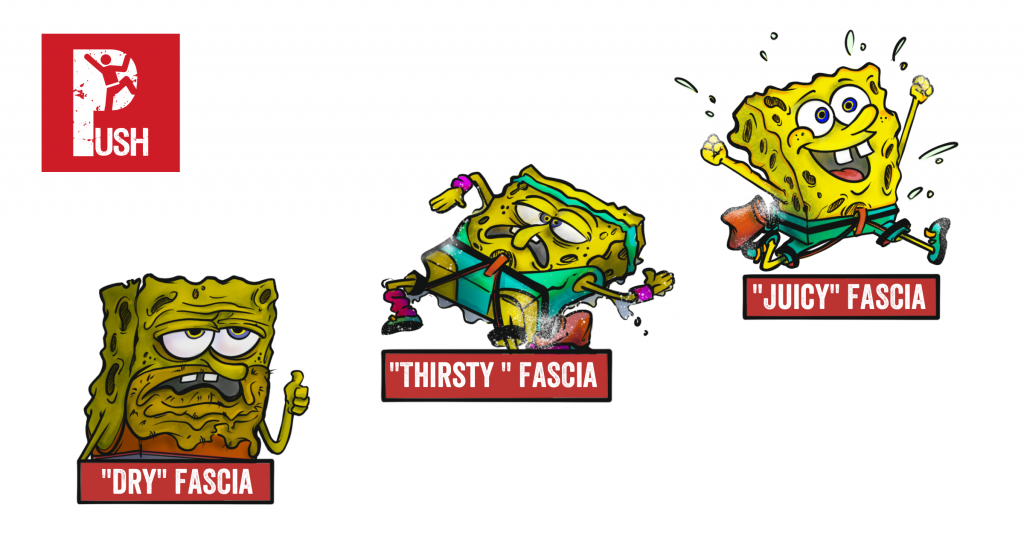
When fascia gets unhealthy though, it becomes much like a dry sponge. No fluid to nourish cells and hydrate tissue. It’s brittle, hard, and you cannot twist it in any direction. You are afraid something is going to tear or break.
SAME idea with your fascia. Do you want to be climbing in competition with half your body functioning like a dry sponge?
I imagine you want to be able to move freely and feel like you are gliding smoothly! Your whole body should feel light and buoyant when everything is doing its job. Your fascia absorbs shock and it hydrates all of your cells and does all of these incredible things. It does so much more than relieve pain! You can optimize your body to its full amazing potential. “
Healthy fascia means you have the space for your muscles to expand and contract at full capacity. You have blood flow fully oxygenating all muscles at optimal levels. You recover faster. You move more easily. This is what your body needs to perform at its best!
As a rock climber, what areas of the body should you pay attention to first?
You know best what areas of your body need the most work. But these are suggestions on where to start. Be sure to do your research on these areas of the body. Familiarize and get comfortable using fascia tissue tools to ensure the best results. Here, you can find a detailed technique for your calves and biceps.
- Calves
- Biceps
- Adductors
- Flexors
- Extensors
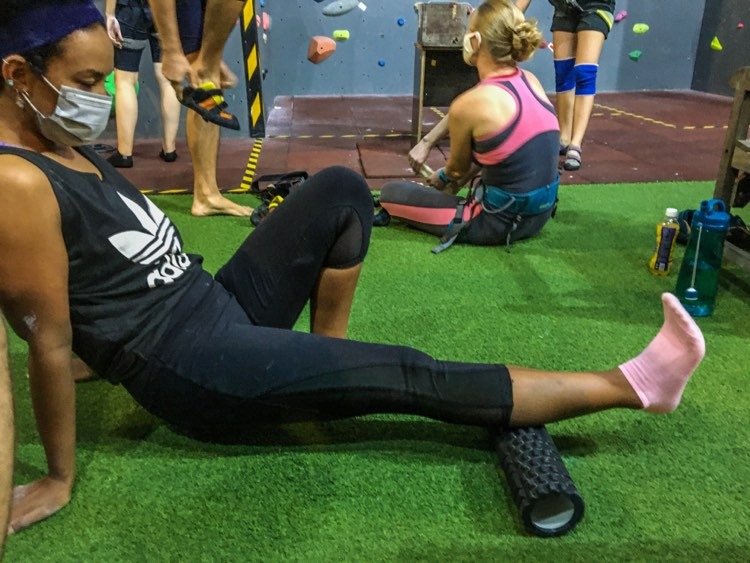
Calves:
1.) Sit on the ground with your legs extended.
2.) Place the roller under the calf area.
3.) Place your hands behind you and lift your body up adding weight to your calve area.
4.) Add weight by lifting your body up. ( You can add extra weight for more pressure by placing one leg on top of the other.
5.) Point and flex your toes 1-8 times.
6.) BREATH!
7.) Rotate your ankles each direction 2-4 times.
8.) Repeat on another area of your calf that needs to be released.
Calves are great to work through because your feet are stuffed in tiny shoes so you are unable to use as many muscles as you could when your feet are spread. Your feet and calves are connected.
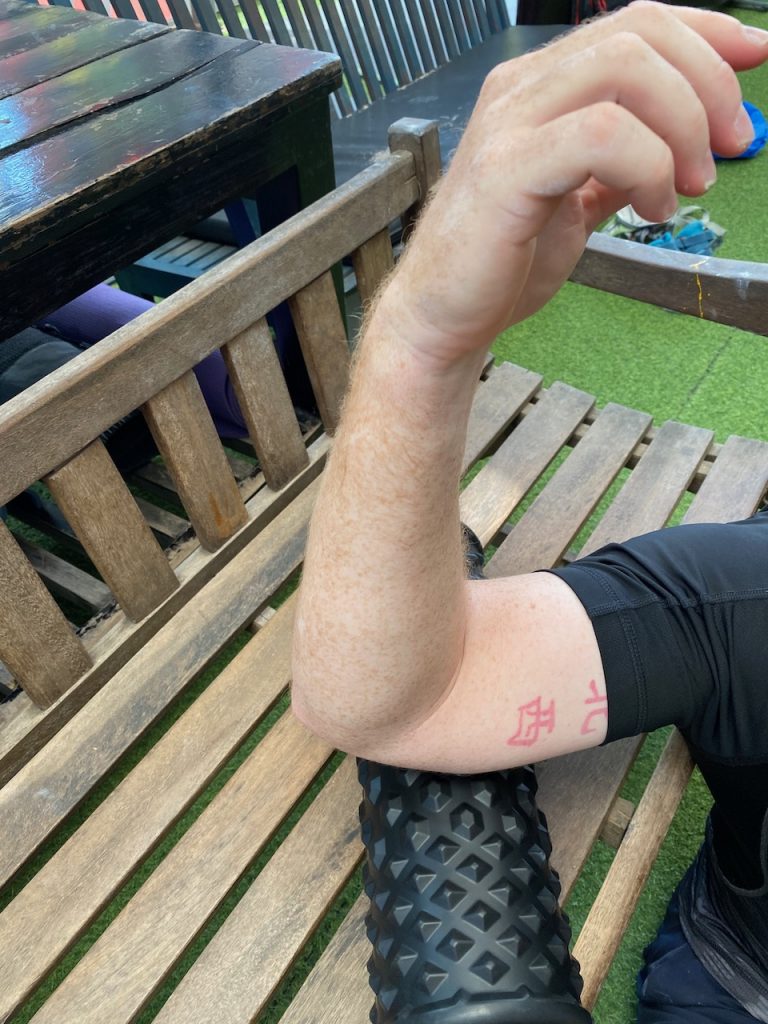
Biceps:
1.) Find an area where you can place your upper arm onto a table, chair, or firm area.
2.)Place your roller under your bicep.
3.)Apply pressure to the area that is tight.
4.)Extend your arm out and in 2-4 times.
5.)BREATH
6.)Rotate your arm back and forth from your rotator cuff to release deeper.
7.)Shake out your arm and do a 2nd spot.
8.)Repeat on other arm.
Adductors:
Adductors are important to pay attention to. Your inner thighs are great for mobility, moving your knee out, and pushing against the wall.
Lats, Extenders and Flexors:
Specifically, with the arms, you have the extenders, and the top of your forearm that pull your fingers back. Flexors, biceps, and the lat give the ability to extend your arm. Your Lats should be doing the pulling motion instead of your neck and your shoulders, right?
Now that you are feeling good about adding fascia tissue technique, how can you add the practice into your climbing routine?
Go and purchase some fascia tissue technique tools. Decathlon has a wide variety of foam rollers and other facia tissue tools. Order below. Pro Tip: Push Climbing is a decathlon pick up location. Follow the link below to purchase tools to get started today!
Get comfortable with using a foam roller and some fascia release tools and techniques recommended.
If you want to know the most effective ways to release fascia or need more ideas on tips to learn more about what Julia has going on, follow her on INSTAGRAM!
Julia is super active on Insta and constantly sharing helpful information to stay informed on how to maintain awareness of healing and improving your body! Follow the link below.

Thank you to Julia Blackwell for all your amazing knowledge. And to all the climbers out there: don’t be that sad sponge climber. Join the pain free movement!
Words by: Ally Fleckenstein
Photos by: Ally Fleckenstein & Chris Taljaard
Design by: South Radish
Interview and Fascia wisdom by: Julia Blackwell
